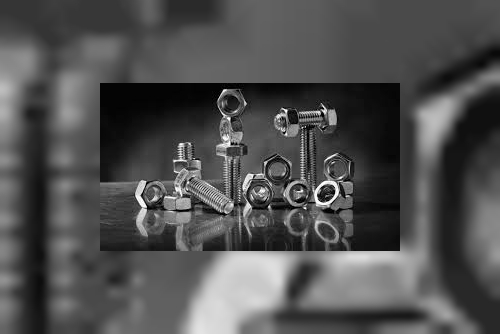Fasteners may be small components, but they hold the industrial world together—literally. From skyscrapers to pipelines, these essential hardware pieces play a crucial role across sectors like oil & gas, construction, automotive, power, and manufacturing.
AtPipex.ai, one of India’s leading B2B marketplaces for industrial products, fasteners consistently rank among the most searched and downloaded product categories. Professionals rely on our platform for detailed specifications, accurate weight charts, and procurement-ready data.
Fasteners and their key subtypes — Bolts, Carriage Bolts, and Nuts — complete with standard weight charts (in mm and kg) and practical usage notes. Whether you're in procurement, logistics, or on the shop floor, these charts help ensure accurate ordering, cost estimation, and smooth project execution.
Standard Fasteners Weight Chart – At a GlanceA fastener is a mechanical tool designed to hold two or more objects together. What differentiates one type of fastener from another is its design, load capacity, and intended use. While there are many varieties — screws, rivets, anchors, washers — the most commonly used in heavy-duty industrial applications are bolts, carriage bolts, and nuts. To ensure proper selection and accurate load handling, many industries rely on a Fasteners Weight Chart, which provides essential data on the weight of different fastener types and sizes—crucial for both structural calculations and bulk logistics.
Choosing the right fastener and knowing its weight matters, especially when:
Calculating transportation loadsPlanning bulk procurement
Ensuring compliance with design specs
Packaging components for export
The following sections provide detailed insights into each sub-product, along with a weight chart for practical use.
Main Fasteners Weight Chart – Quick ReferenceThis consolidated table gives a summary of average weights for 100 pcs of the most common fasteners.
Fastener
Type
Size(mm)
Length (mm)
Approx. Weight per 100 pcs (kg)
Hex Bolt
M6
20
1.02
M8
30
2.44
M10
40
4.10
M12
50
6.25
M16
75
11.95
M20
100
18.80
Carriage Bolt
M6
25
1.15
M8
50
3.60
M10
60
5.90
M12
75
8.80
M16
100
14.60
Hex Nut
M6
—
0.60
M8
—
1.05
M10
—
1.80
M12
—
2.75
M16
—
4.80
The following sections provide detailed insights into each sub-product, along with a weight chart for practical use.
1. Bolt Weight Chart – Standard Hex BoltsBolts are threaded fasteners typically used with nuts or pre-tapped holes. They provide high tensile strength and are widely used in structural, mechanical, and civil engineering projects. For accurate planning and procurement, engineers often refer to a Bolt Weight Chart to determine the precise weight of various bolt sizes, which is essential for calculating load capacity, transportation weight, and assembly requirements.
Applications:Steel structure assemblyHeavy equipment manufacturing
Automotive frames
Power and oil & gas pipelines
Weight Chart: Hex Bolts (Mild Steel, 100 Pcs)
Bolt Size (mm)
Length (mm)
Approx. Weight per 100 pcs (kg)
M6
20
1.02
M8
30
2.44
M10
40
4.10
M12
50
6.25
M16
75
11.95
M20
100
18.80
Explanation:This chart reflects average weights for mild steel hex head bolts. Weight increases as the diameter and length increase. For example, M20 bolts (100mm) weigh over 18 kg per 100 pieces, making it critical to plan freight or inventory accordingly.
If you’re dealing with stainless steel or other alloys, expect slight variations in weight.
2. Carriage Bolt Weight Chart – For Wood and Structural AssembliesCarriage bolts feature a round head with a square neck that locks into place when inserted into wood or softer materials. Their smooth head provides a tamper-proof finish, making them ideal for applications where appearance and security are important. To streamline inventory control and optimize usage, many industries consult a Carriage Bolt Weight Chart that outlines size-wise weight details for precise and efficient operations.
Common Uses:Wooden fencing and deckingMachinery bases
Timber construction
Metal-to-wood connections
Weight Chart: Carriage Bolts (100 Pcs)
Bolt Diameter (mm)
Length (mm)
Approx. Weight per 100 pcs (kg)
M6
25
1.15
M8
50
3.60
M10
60
5.90
M12
75
8.80
M16
100
14.60
Explanation:Because of their partially threaded shank and unique head design, carriage bolts tend to weigh slightly more than standard bolts of the same size. For example, an M10 x 60mm carriage bolt weighs nearly 6 kg per 100 units. This weight includes the bulk of the round head and square neck underneath.
Always confirm whether the bolts are full-thread or part-thread, as this can impact the weight marginally.
3. Nut Weight Chart – Hex Nuts for Industrial UseNuts are used with bolts to clamp two or more parts together. Depending on the application, you may choose hex nuts, lock nuts, flange nuts, or wing nuts. The most common in industrial systems is the hex nut due to its strength and ease of use. For better inventory planning and structural calculations, engineers often refer to a Nut Weight Chart, which helps in identifying the weight specifications of different nut types across various sizes.
Where They’re Used:Flange connectionsEquipment assembly
Structural bolting systems
Pressure vessels and pipeline joints
Weight Chart: Hex Nuts (100 Pcs)
Nut Size (mm)
Type
Approx. Weight per 100 pcs (kg)
M6
Hex Nut
0.60
M8
Hex Nut
1.05
M10
Hex Nut
1.80
M12
Hex Nut
2.75
M16
Hex Nut
4.80
Explanation:The weight of a nut primarily depends on size and material density. Hex nuts are designed to match the thread of the corresponding bolt. For instance, an M16 nut weighs around 4.8 kg per 100 units, a notable consideration when ordering in bulk.
Stainless steel nuts may weigh more than their mild steel counterparts, and heavy-duty locking nuts or self-tightening types may have additional mass.
Why Weight Charts Are Crucial for Industrial BuyersWeight charts are more than just reference tables—they help professionals:
Estimate freight and storage costsChoose the right packaging dimensions
Reduce waste and over-ordering
Streamline site-level installations
At Pipex.ai, these charts are curated with practical industrial scenarios in mind. Each product listed includes technical specifications, weights, and dimension data in downloadable formats, enabling smooth B2B transactions and accurate BOM (Bill of Materials) planning.
Whether you're ordering fasteners for a mega infrastructure project or stocking inventory for industrial resale, knowing the weight per 100 pieces of each size can save time, cost, and confusion. With this updated guide, professionals can make informed decisions backed by data and real-world application.
Explore the complete collection of fasteners, including bolts, nuts, carriage bolts, and more, only atPipex.ai, your trusted partner in industrial B2B procurement.












